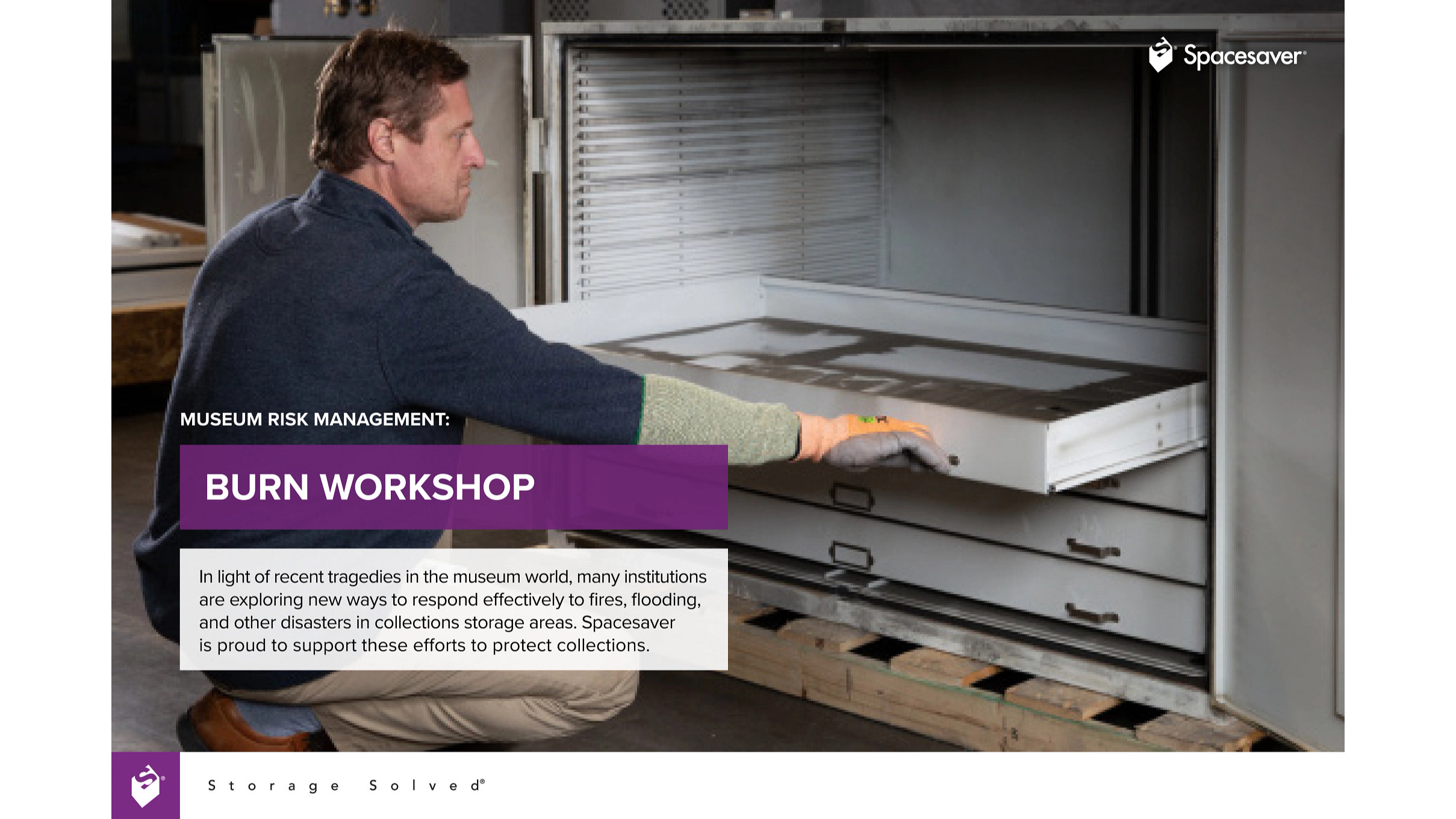How To Protect Museum Artifacts From Direct Physical Forces & Contaminants
Many things can damage collections. If you run a museum or a similar historical institution, check out Spacesaver’s (800.255.8170) guide to learn how to protect your precious exhibits.

It’s important to preserve ancient relics, art pieces, and other items, not just for their historical and cultural value but for the patrons who come to see them. Unfortunately, artifacts tend to be fragile and particularly susceptible to damage. That’s why Spacesaver has put together its handy guide to help address agents of deterioration and proper storage best practices and identify what kind of storage you can use to best protect your collections.
Learn more at https://www.spacesaver.com/blog/museum-collection-care-best-practices
The Ten Agents of Deterioration
Spacesaver’s guide cites ten agents of deterioration as the most devastating potential threats. By the way, they didn’t just pull them out of a hat; these agents have been verified by industry professionals. The first of them is direct physical force, such as sudden shock, vibrations, or pressure, which can break and deform objects.
Some causes of direct physical force include system operations and seismic activity. Spacesaver recommends installing anti-tip rail systems and bars for stability on mobile systems and attaching cabinets to one another for added stability to mitigate damage.
The Proper Protection
Pollutants are another common threat, and these can range from dirt, volatile compounds, and residual pesticides that are either airborne or transferred by touch. To protect your collections, you can seal them in cabinets made with non-off-gassing powder coat paint.
Wondering where you can get these cabinets? Spacesaver Corporation manufactures them, along with a wide range of other storage solutions. Spacesaver’s airtight museum cabinets feature fumigant-resistant elastomeric gaskets and three-point latches that will shield fragile items from contaminants.
Sealed museum cabinets can also protect relics from fire, smoke, and soot, less common but extremely damaging agents of deterioration. For mitigating water damage, Spacesaver advises you use steel compactors that can raise cabinets four to six inches off the ground and cabinets with waterproof caps. If leaks and flooding are a concern where you’re located, always opt for metal, as it holds up better against water than wood or particle board.
Controlling lighting and temperature will also reduce the amount of habitable environments for pests and mold, both of which are threats to organic artifacts. These agents of deterioration thrive in dark, damp spaces, so make sure you get rid of as many of those kinds of areas as possible!
Storage Best Practices
Other agents of deterioration include incorrect humidity, radiation, and thieves and vandals. Each of these can be addressed with airtight storage equipment of the appropriate size, functioning HVAC systems, UV protection, and proper locking mechanisms, respectively.
Finally, neglect can often lead to damage and loss of items, making it important for you to organize and maintain your collections to ensure they are adequately preserved and exactly where they should be.
Of course, this wasn’t an entirely exhaustive list. If you want more details about the most common agents of deterioration and what you can do to protect your artifacts from them, check out Spacesaver’s full guide. Visit https://www.spacesaver.com/blog/museum-collection-care-best-practices to read their blog today.

